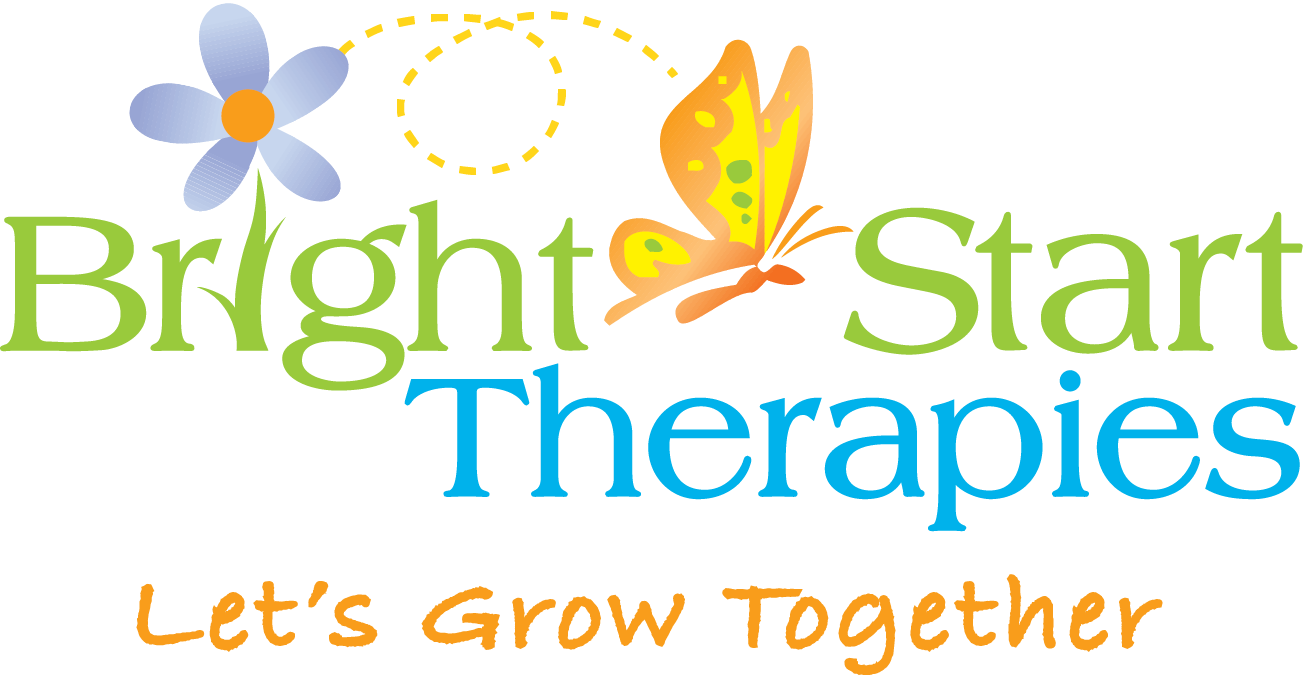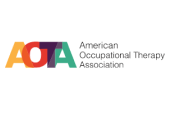What Is
Occupational Therapy?
Occupational Therapy (OT) facilitates the skills necessary for an individual to perform their job of living or their “occupation.” Everyone has an occupation – even a child! A child’s “occupation” is to grow, develop, learn, and play. As they get older, children need to start taking care of their own self-care needs. These include feeding themselves, brushing their teeth, and getting dressed – and eventually participating in school and completing homework assignments.
OT helps children who have physical, sensory, or cognitive deficits to achieve their developmental milestones and increase their independence for age-appropriate skills. OT enhances sensory processing and sensory integration, which improves body awareness, attention, and self-regulation. OT also develops hand function for success during play, activities of daily living, and school activities. Through occupational therapy, children develop their sense of self as they interact with family, friends, and others to learn and play.
Fine Motor Skills
Fine motor skills involve the coordination and movement of the small muscles in the hands. By developing the fine motor movements necessary to coordinate small movements needed to complete tasks such as grasping and releasing objects. As fine motor skills improve, so will the ability for a wide range of activities such as self dress, self-feed, manipulating toys, using writing instruments, as well as increasing success during play, school activities, and activities of daily living.
Gross Motor Skills
Activities such as jumping, swinging, bouncing, sliding, and running work to develop a child's motor learning. Sessions might incorporate different types of swings, ziplines, therapy balls, trampolines, climbing walls, obstacle courses, and scooter boards. All of these activities help to develop balance, gross motor and fine motor coordination, motor planning, bilateral control, sensory processing, core strength, posture, and upper/lower extremity strength.
Sensory Processing
Definition: the way in which the nervous system registers information from the sensory systems and responds to the information. When there is a difficulty with sensory processing, the information goes into the brain but does not get organized into appropriate responses. Sensory systems include tactile (touch), proprioceptive (input from our muscles and joints to help with coordination body awareness, calming self-regulation), vestibular (balance our head's orientation in space), auditory (hearing), visual (seeing), olfactory (smell), gustatory (taste), and interoception (internal organ receptors that guide regulation, hunger, thirst, heart rate, respiration, and elimination.)
Self Help
Shoe tying is a self-help skill that can be important to a child's independence. Other self-help skills that OT's work on include self-feeding, dressing, toothbrushing, hand washing, toileting, and bathing.
Questions
Frequently Asked
How does OT help with daily living skills?
Daily living skills are the tasks we do in our everyday routines such as getting dressed, brushing teeth, eating, and playing with toys. OT can help develop the skills to do these things independently in both the home and school environment.
What is proprioception and body awareness in space?
Proprioception skills is the sense that allows us to know our body position in relation to gravity and space. This sense also informs us the force of our movements. If for example you reach to pick up a plate, you can judge how far, fast and how tight of a grasp and hold you will need to not drop it or break it.
Body Awareness refers to one's awareness of their body parts or dimensions. Children who do not have adequate body awareness may appear clumsy or awkward, and they frequently have difficulty with gross & fine motor activities that require subtle changes in posture, strength, force or dexterity.
Who would benefit from our OT program?
We serve a wide range of clients from birth to 18 years of age. Appropriate occupational therapy referrals would include:
- Attention Deficit Disorders (ADD)
- Attention Deficit/Hyperactivity Disorder (ADHD)
- Autism Spectrum Disorder (ASD)
- Brain injury
- Delays in self-care/adaptive skills
- Developmental Delay
- Down Syndrome
- Fine motor deficits
- Genetic Disorder
- Handwriting difficulties
- Juvenile Rheumatoid Arthritis
- Neurological Disorders
- Prematurity
- Sensory Integration Disorder
How do I start services?
We serve a wide range of clients from birth to 18 years of age. Appropriate occupational therapy referrals would include:
- Arthritis
- Attention Deficit Disorders
- Autistic Spectrum Disorder
- Brain injury
- Delays in Self-Care/Adaptive Skills
- Down syndrome
- Developmental Delay
- Fine motor deficits
- Genetic Disorder
- Handwriting difficulties
- Juvenile Rheumatoid
- Neurological Disorders
- Prematurity
- Sensory Integration Dysfunction
What is the vestibular system?
The vestibular system provides the sense of balance and the information about body position. This allows us to know where we are in a space and where we are in relation to other objects or people within that space allowing for internal and external forces.
What is a Sensory Integration Disorder?
Sensory Integration Disorder (SiD) refers to challenges a child may have to integrate or accurately interpret sensory information. In OT we refer to eight senses that make up the sensory system: Sight, Sound, Smell, Taste, Touch, Movement (vestibular), Body position (proprioceptive), and the sense of identifying what is happening inside our body such as hunger, breathing, toileting needs, heart rate, and more (Interception).
Who will be teaching my child?
Your child will have a fun, child-centered therapy session with a licensed and registered occupational therapist. In addition, we have therapists who have specialized training and/or certification in the following areas: NDT (Neuro-Developmental Treatment), Sensory Integration, Autism, Early Intervention, Handwriting without Tears, and Therapeutic Listening.
How will I know the therapy is working?
Periodic progress reports are completed every six months to ensure that your child is meeting or progressing with their goals.
What is your teaching philosophy?
Occupational therapy is a play-based approach where the occupational therapist follows the child’s lead and integrates therapeutic goals into the playful environment that is created. In addition, parent training provided during therapy is essential to equip parents with the tools needed to help their child progress and function in their current environment and how to adapt to new challenges. Daily homework activities will be provided so that carry-over can occur from treatment sessions into daily life.
What to expect in an OT evaluation?
Prior to the evaluation
- Parents complete a questionnaire regarding their concerns and the child’s medical, developmental, and educational history.
- We may request medical information from the child’s pediatrician, and we may also request information from other medical or educational professionals who have evaluated the child.
During the evaluation
- Your child’s medical, developmental, and educational history is carefully reviewed. Parents are interviewed regarding their concerns and the child’s history. This information helps the occupational therapist identify areas to evaluate more closely.
Following the evaluation
- Initial results of the evaluation and recommendations are reviewed with you (and your child if age appropriate). A written report detailing evaluation results will be mailed to your home.

Occupational Therapy Assessments
OT Evaluations are conducted for the purpose of determining the presence of impairment in fine motor, gross motor, self-help, and sensory integration skills. For young children, the formal evaluation is fun and play-based with some structured tasks. For older children and adolescents, more formal measures are administered. The different assessments that are administered will compare your child’s skills to peers of the same age.

does my child need occupational therapy?
My child seems to have weak hands and/or tires easily when completing fine motor tasks
My child has difficulty with printing tasks (i.e letter formation, sizing and spacing)
My child uses a poor pencil grasp
My child shows poor visual motor coordination skills
My child has difficulty manipulating smaller objects
My child shows poor visual perceptual skills such as how far away things are or how close
My child appears clumsy, bumps into walls or furniture
My child seems weak or floppy
My child shows poor organizational skills
My child has difficulty with executive functioning tasks
My child has difficulty playing and socializing with other children their age
My child does not focus or has difficulty maintaining focus and may get tired easy when required to maintain focus
My child has difficulty making eye contact, maintaining eye contact or may look at things out of the corner of eyes
My child has difficulty following multiple-step directions
My child has difficulty learning and/or coordinating gross motor tasks (i.e. riding a bike, skipping, hopping, sports games)
My child has difficulty with self-care tasks (i.e. trouble using utensils for eating, difficulty manipulating buttons and zippers to get dressed, toileting, bathing)
My child appears to be impulsive
My child seems to be the quiet one that is easily forgotten, more under responsive
My child has difficulty with feeding and textures (i.e. is a fussy/picky eater)
My child refuses to walk barefoot on grass or dislikes playing in sand
My child appears overly active and has a difficult time calming down
Issues staying still and may wonder off unexpected
My child overreacts to touch, smell, movement, sound, odor, light
My child appears to have difficulty with transitions and/or changes to their routine







While Having Fun












